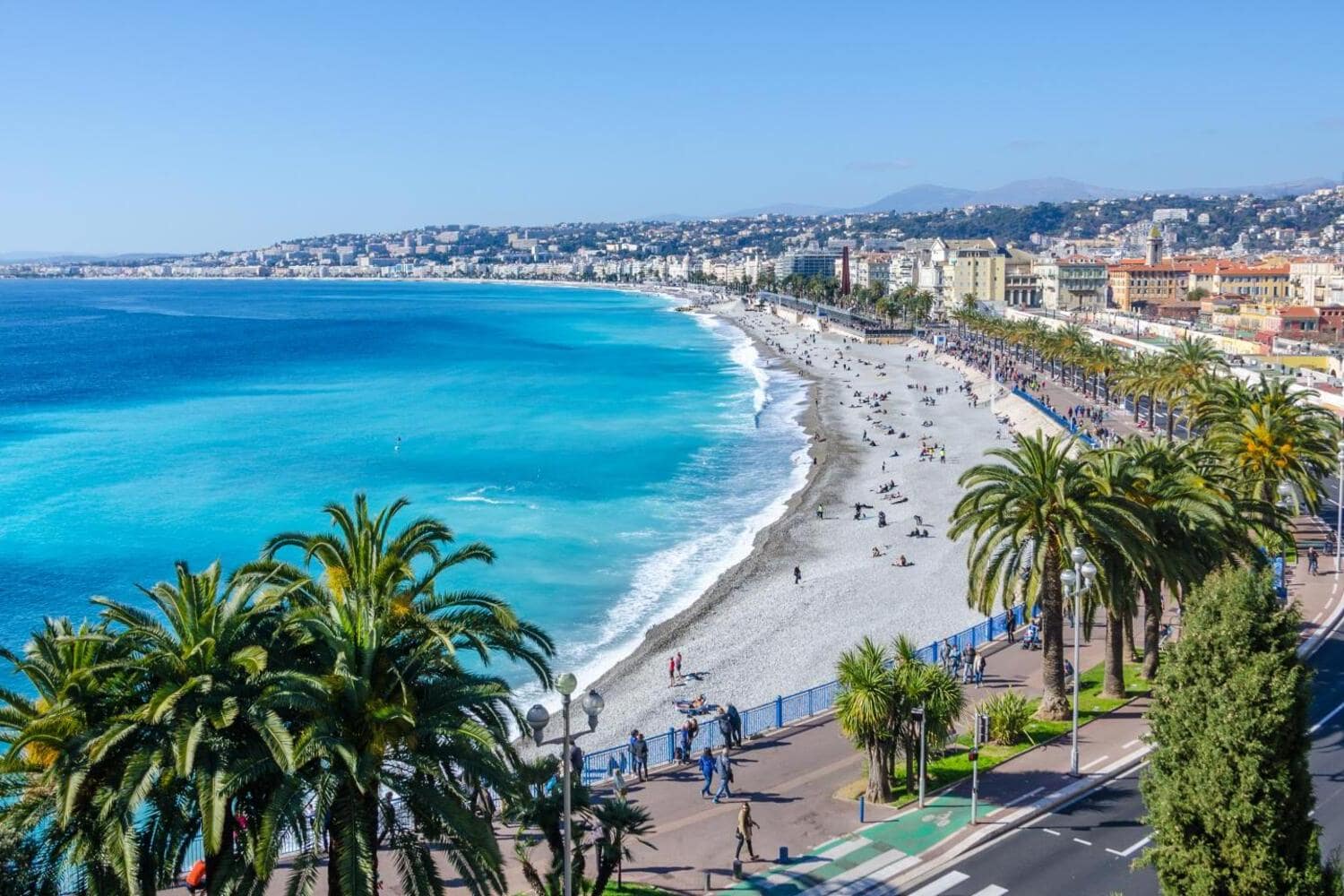Nice is a true gem of the French Riviera, attracting tourists from all over the world with its mild climate, turquoise sea, and unique atmosphere. The city offers more than just beaches and leisure—it is rich in history, cultural heritage, and artistic influence. It combines French elegance with Mediterranean charm, making it one of the most distinctive cities in Europe. Below is a collection of fascinating facts about Nice that you may not have known but will surely find intriguing.
- Nice was founded by the Greeks in the 4th century BC. They named the city Nikaia in honor of the goddess of victory, Nike. This makes Nice one of the oldest cities along the French Mediterranean coast.
- The city officially became part of France only in 1860. Before that, it belonged to the Kingdom of Sardinia and had strong cultural ties with Italy. Even today, you can hear Italian spoken and see the influence of Italian architecture throughout the city.
- The Promenade des Anglais is one of the most iconic landmarks in Nice and among the most famous seaside promenades in the world. It was named after the English aristocrats who came here for winter retreats in the 19th century. They were the ones who financed the construction of this elegant walkway along the sea.
- Nice has its own local language known as Niçard. It is a variety of the Occitan language with Ligurian influences, once widely spoken in the region. Although it is rarely used today, it is still taught in some schools as part of the local cultural heritage.
- The city is surrounded by mountains, which protect it from strong winds and create a unique microclimate. As a result, Nice enjoys around 300 sunny days per year, and winter temperatures rarely drop below 10°C. This climate makes the city a popular destination year-round.
- Nice is the second most visited tourist city in France after Paris. It attracts more than 5 million tourists every year, not including local visitors and those passing through. The city has a highly developed tourist infrastructure with over 200 hotels.
- Nice is home to one of France’s largest airports—Nice Côte d’Azur Airport. It is located just six kilometers from the city center and offers direct flights to over 100 cities around the world. The take-offs and landings are especially scenic due to the airport’s proximity to the sea.
- The Old Town, or Vieux Nice, has preserved its medieval street layout and colorful architecture. It exudes the charm of a small Italian village with narrow alleys, open-air markets, and small churches. It remains the vibrant heart of the city.
- The city hosts the famous Matisse Museum dedicated to the life and work of Henri Matisse. The artist spent his final years in Nice, and the city inspired many of his late masterpieces. The museum holds one of the most comprehensive collections of his paintings, sketches, and sculptures.
- Another important cultural venue is the Museum of Modern and Contemporary Art (MAMAC). It features works by renowned artists such as Yves Klein, Andy Warhol, and Niki de Saint Phalle. It is one of the leading contemporary art museums in southern France.
- Nice was a major center of film production even before the Cannes Film Festival was established. The city was home to one of France’s first film studios—Victorine Studios, founded in 1919. Many notable directors, including François Truffaut and Louis Malle, filmed movies there.
- Every February, Nice hosts one of the oldest and largest carnivals in the world. Its roots date back to the 13th century, and its current form emerged in the 19th century. Each year, the carnival has a new theme and features vibrant floats and flower parades throughout the city streets.
- Nice’s cuisine blends French, Italian, and Provençal influences. Signature dishes include salade niçoise, ratatouille, socca (a chickpea pancake), and panisse (fried chickpea flour balls). Local markets like Cours Saleya offer fresh vegetables, seafood, and fragrant herbs.
- The main urban park is Castle Hill, or Colline du Château, which features historic ruins, a waterfall, and panoramic viewpoints. Although the original castle was destroyed in the 18th century, the hill remains a popular walking spot. From the top, there is a stunning view of the Bay of Angels.
- Nice is home to the University of Nice Sophia Antipolis, one of the most prestigious universities in southern France. It offers programs in the humanities, medicine, law, science, and engineering. Students from all over the world come here to study.
- The city has its own football club, OGC Nice, which competes in France’s Ligue 1. Founded in 1904, it is one of the oldest clubs in the country. Its home stadium, Allianz Riviera, was opened in 2013 and holds over 35,000 spectators.
- The beaches of Nice are covered in pebbles rather than sand, which is unusual for a resort city. Locals take pride in this feature because it ensures exceptionally clear water and a unique coastal ambiance. The pebbles also help reduce coastal erosion.
- In 2015, Nice was added to the UNESCO World Heritage list as a winter resort of the French Riviera. This recognition highlights the city’s historical significance as a vacation destination for European aristocracy. It also affirms the distinctiveness of its urban planning and architectural style.
These incredible facts about Nice offer a new perspective on this Mediterranean city. It captivates not only with its natural beauty but also with its rich cultural and historical depth. Nice is a perfect example of a city that preserves its identity while embracing the world. This is why it remains a beloved destination for millions of people from across the globe.





